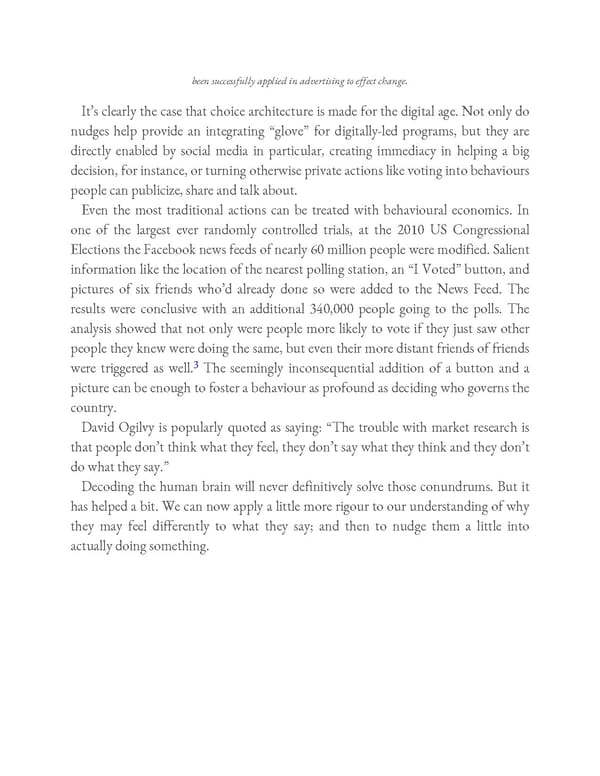been successfully applied in advertising to effect change. It’s clearly the case that choice architecture is made for the digital age. Not only do nudges help provide an integrating “glove” for digitally-led programs, but they are directly enabled by social media in particular, creating immediacy in helping a big decision, for instance, or turning otherwise private actions like voting into behaviours people can publicize, share and talk about. Even the most traditional actions can be treated with behavioural economics. In one of the largest ever randomly controlled trials, at the 2010 US Congressional Elections the Facebook news feeds of nearly 60 million people were modified. Salient information like the location of the nearest polling station, an “I Voted” button, and pictures of six friends who’d already done so were added to the News Feed. The results were conclusive with an additional 340,000 people going to the polls. The analysis showed that not only were people more likely to vote if they just saw other people they knew were doing the same, but even their more distant friends of friends 3 were triggered as well. The seemingly inconsequential addition of a button and a picture can be enough to foster a behaviour as profound as deciding who governs the country. David Ogilvy is popularly quoted as saying: “The trouble with market research is that people don’t think what they feel, they don’t say what they think and they don’t do what they say.” Decoding the human brain will never definitively solve those conundrums. But it has helped a bit. We can now apply a little more rigour to our understanding of why they may feel differently to what they say; and then to nudge them a little into actually doing something.
 Ogilvy on Advertising in the Digital Age Page 427 Page 429
Ogilvy on Advertising in the Digital Age Page 427 Page 429